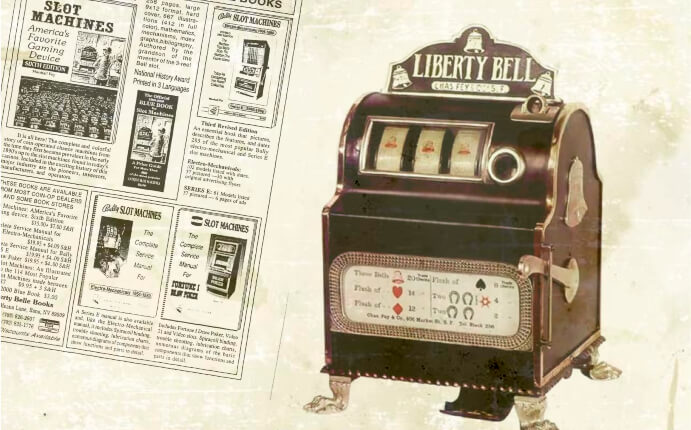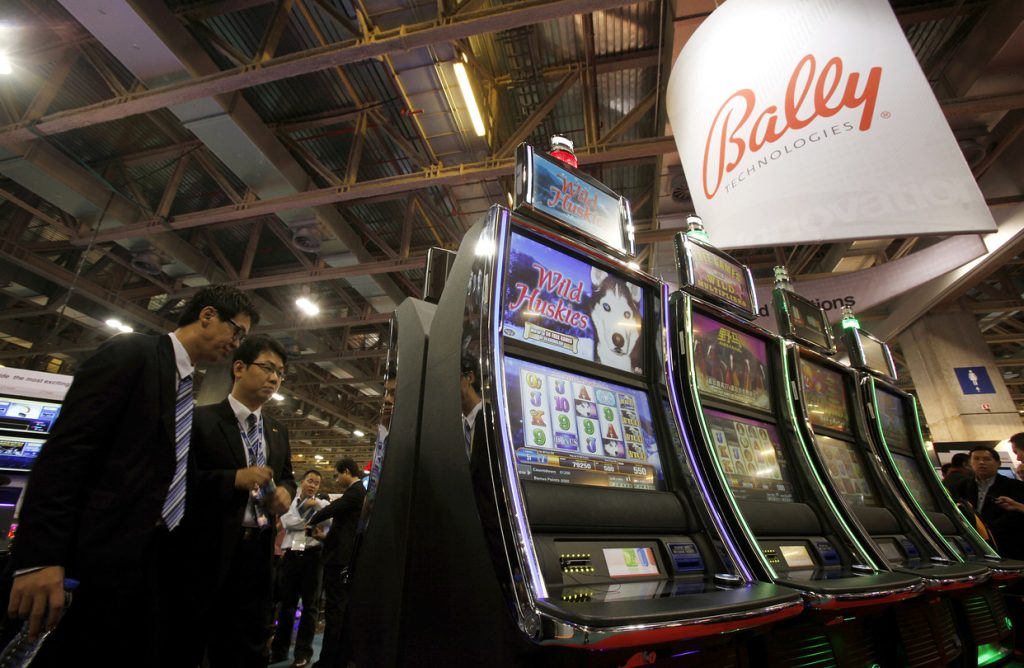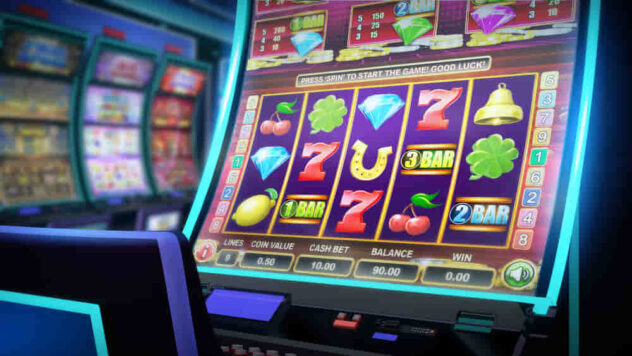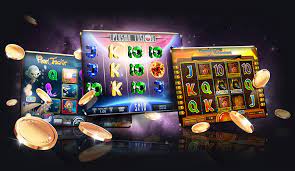Invention of the Liberty Bell The year was 1895, and the bustling city of San Francisco was abuzz with the spirit of innovation. It was here that a humble mechanic named Charles Fey would make history with his groundbreaking invention: the Liberty Bell. Born out of a desire to create a simple yet engaging gambling device, Fey’s creation would lay the foundation for an industry that would captivate millions around the world.
The Liberty Bell was a marvel of engineering, featuring three spinning reels adorned with symbols inspired by the popular culture of the time. From horseshoes to hearts, each symbol held the promise of untold riches for lucky players. But it was the iconic cracked Liberty Bell symbol that would become synonymous with Fey’s invention, earning the machine its enduring name.
Despite its simplicity, the Liberty Bell was an instant hit among gamblers, drawing crowds eager to try their luck at the novel device. From its modest beginnings in local saloons and cigar shops, the Liberty Bell quickly spread across the country, sparking a craze for mechanical gambling machines.
But Fey’s invention was more than just a commercial success; it was a cultural phenomenon that captured the imagination of a nation. As word of the Liberty Bell spread, so too did the popularity of slot machines, paving the way for an industry that would continue to innovate and evolve in the years to come.
In Chapter 1 of “The Evolution of Fortune,” we explore the origins of the slot machine revolution and the pivotal role played by Charles Fey and his iconic invention. From the dusty streets of San Francisco to the bustling casinos of Las Vegas, join us on a journey back in time to witness the birth of a gaming legend.

As the 20th century dawned, the clinking of coins and the whirring of reels became an increasingly familiar sound in bars, saloons, and gaming halls across America. Charles Fey’s Liberty Bell had ignited a spark of innovation that would soon blaze into a full-fledged industry.
In Chapter 2 of “The Evolution of Fortune,” we delve into the next chapter of slot machine history: the rise of mechanical slot machines. Building upon Fey’s pioneering design, inventors and entrepreneurs sought to capitalize on the growing demand for gambling entertainment.
One such innovator was Herbert Mills, who introduced the Operator Bell in 1907. Mills’ machine featured a striking design and innovative features, including the ability to dispense chewing gum as a prize—a clever workaround to skirt anti-gambling laws in certain states.
The Operator Bell proved to be a resounding success, spawning a legion of imitators and solidifying the slot machine’s place in American culture. From the dusty plains of the Wild West to the bustling streets of New York City, mechanical slot machines became a ubiquitous presence, offering thrills and excitement to players of all walks of life.
But with popularity came scrutiny, and slot machines soon found themselves the target of moral crusaders and anti-gambling advocates. In response, lawmakers enacted a patchwork of regulations and restrictions, leading to the rise of “one-armed bandits” and other variations designed to skirt the law.
Despite these challenges, the allure of slot machines remained undiminished, fueled by a potent mix of excitement, risk, and the promise of instant wealth. With each spin of the reels, players embarked on a journey of chance, their fates hanging in the balance as symbols aligned and fortunes were won and lost.
“The Evolution of Fortune,” we explore the golden age of mechanical slot machines, tracing their meteoric rise from novelty contraptions to cultural icons. Through captivating anecdotes and historical insights, we shine a light on the entrepreneurs, inventors, and visionaries who shaped the destiny of these beloved gaming devices. Join us as we uncover the secrets behind the gears and levers that powered a revolution in entertainment and ushered in a new era of gambling excitement.

Introduction of Fruit Symbols
As the 20th century progressed, the world of slot machines underwent a colorful transformation that would forever change the landscape of gambling entertainment. In Chapter 3 of “The Evolution of Fortune,” we explore the introduction of fruit symbols—a pivotal moment that would leave an indelible mark on the history of slot machines.
The early mechanical slot machines, with their simple yet captivating gameplay, had captured the imagination of players far and wide. But as competition intensified and operators sought ways to distinguish their machines from the rest, a new trend began to emerge: the use of fruit symbols.
It was in the early 1900s that slot machines first began to feature symbols such as cherries, lemons, and oranges. These colorful icons added a whimsical touch to the reels, enticing players with the promise of juicy rewards. The symbolism was simple yet effective, tapping into universal themes of abundance, vitality, and good fortune.
One of the most iconic fruit machines of the era was the “Operator Bell,” introduced by Herbert Mills in 1907. This machine featured a variety of fruit symbols alongside traditional playing card icons, cementing the association between fruit and slot machines in the public consciousness.
But it wasn’t just about aesthetics—fruit symbols also served a practical purpose. In an era of strict gambling regulations, operators often had to get creative to circumvent anti-gambling laws. By offering fruit-flavored gum as a prize for winning combinations, slot machine manufacturers found a clever workaround that allowed them to operate within the bounds of the law.
The introduction of fruit symbols marked a turning point in the evolution of slot machines, paving the way for the vibrant and diverse array of themes and motifs that would follow in the decades to come. From exotic fruits to classic fruit machine symbols, the imagery on the reels became as varied and colorful as the fruits themselves.
In Chapter 3 of “The Evolution of Fortune,” we delve into the origins of fruit symbols in slot machine design and their enduring legacy in the world of gambling entertainment. Through engaging anecdotes and historical insights, we uncover the sweet secrets behind one of the most iconic symbols in slot machine history. Join us as we peel back the layers of time to reveal the juicy story behind the fruit symbols that have captivated players for generations.

Electromechanical Innovations
As the 20th century progressed, so too did the evolution of slot machines, driven by a relentless spirit of innovation and a quest for ever-greater excitement. In Chapter 4 of “The Evolution of Fortune,” we explore the electrifying advancements that propelled slot machines into a new era of mechanical marvels.
The 1960s marked a watershed moment in the history of slot machines with the introduction of electromechanical innovations. Inventors and engineers, inspired by the possibilities of emerging technologies, sought to push the boundaries of what was possible with these iconic gaming devices.
One of the most significant innovations of this era was the transition from purely mechanical systems to electromechanical ones. Instead of relying solely on gears, levers, and springs, slot machines began to incorporate electric motors and circuitry, ushering in a new era of reliability and versatility.
With the advent of electromechanical slot machines came a slew of exciting new features and functionalities. Multiple paylines allowed for more ways to win, while bonus games and interactive features added an extra layer of excitement and engagement for players.
Perhaps most revolutionary of all was the introduction of the random number generator (RNG), a technology that would forever change the way slot machines operated. By using complex algorithms to generate random sequences of numbers, RNGs ensured fair and unpredictable outcomes, enhancing the integrity of the game and leveling the playing field for players.
But it wasn’t just the internal workings of slot machines that underwent a transformation—their outward appearance evolved as well. Sleek, futuristic designs replaced the clunky, mechanical casings of yesteryear, reflecting the spirit of innovation and progress that defined the era.
In Chapter 4 of “The Evolution of Fortune,” we delve into the electrifying world of electromechanical slot machines, tracing their development from humble beginnings to the cutting-edge marvels of engineering they became. Through captivating anecdotes and expert analysis, we illuminate the technological innovations that revolutionized the gambling industry and forever changed the way we play. Join us as we journey through a world of spinning reels, flashing lights, and the electrifying thrill of the jackpot chase.

Advent of Video Slot Machines
The dawn of the digital age brought with it a seismic shift in the world of slot machines, as the mechanical marvels of old gave way to sleek, high-tech wonders. In Chapter 5 of “The Evolution of Fortune,” we explore the advent of video slot machines—a game-changing innovation that would redefine the gambling landscape.
In the 1970s and 1980s, as computers became increasingly powerful and accessible, slot machine manufacturers began to experiment with incorporating video technology into their products. The result was a new breed of slot machine that replaced physical reels with virtual ones displayed on a video screen.
The transition from mechanical to video slot machines opened up a world of possibilities for game designers, allowing for greater flexibility and creativity in game mechanics and presentation. Instead of being limited to a fixed number of symbols and paylines, video slots could feature dynamic graphics, elaborate animations, and immersive sound effects, creating a more engaging and immersive player experience.
One of the earliest and most influential video slot machines was “Fortune Coin,” introduced by International Game Technology (IGT) in 1976. Featuring a 19-inch Sony Trinitron color display and a computerized logic board, Fortune Coin was a technological marvel that paved the way for the future of slot machine gaming.
But it wasn’t just the technology that set video slot machines apart—it was also the way they changed the nature of gameplay. With the introduction of video reels, designers could create more complex and varied game mechanics, including interactive bonus rounds, cascading reels, and progressive jackpots, offering players more ways to win and enhancing the overall excitement of the game.
The popularity of video slot machines exploded in the 1990s, as casinos embraced the new technology and players flocked to try their luck on the dazzling array of games on offer. From classic themes like Egyptian treasures and ancient mythology to pop culture phenomena like TV shows and movies, video slots offered something for everyone, catering to a diverse audience of players.
In Chapter 5 of “The Evolution of Fortune,” we delve into the world of video slot machines and their transformative impact on the gambling industry. Through insightful analysis and captivating anecdotes, we explore the technological innovations, design trends, and cultural influences that shaped the evolution of video slots and forever changed the way we play. Join us as we journey through a digital wonderland of spinning reels, flashing lights, and the endless pursuit of fortune.

Emergence of Online Slot Machines
As the internet began to weave its way into every aspect of modern life, it was only a matter of time before the world of gambling embraced the digital revolution. In Chapter 6 of “The Evolution of Fortune,” we explore the emergence of online slot machines—a phenomenon that would fundamentally reshape the way people play and experience casino games.
The late 1990s marked the birth of the online casino industry, as pioneering companies launched virtual gambling platforms that allowed players to wager real money on a wide range of games, including slot machines. With the click of a mouse, players could access an endless array of slot titles from the comfort of their own homes, without ever setting foot in a traditional brick-and-mortar casino.
One of the early pioneers of online slots was Microgaming, which launched the world’s first fully functional online casino in 1994. Soon after, they introduced the first online progressive jackpot slot, “Cash Splash,” which offered players the chance to win massive prizes from the comfort of their own homes.
The appeal of online slot machines was undeniable. They offered unparalleled convenience and accessibility, allowing players to enjoy their favorite games anytime, anywhere, without the need to travel to a physical casino. With a vast array of themes, features, and payout structures, online slots catered to every taste and preference, drawing in players from all walks of life.
But it wasn’t just convenience that drove the popularity of online slots—it was also the innovation and creativity of game developers. Freed from the constraints of physical hardware, online slot designers were able to push the boundaries of what was possible, creating games with stunning graphics, immersive soundscapes, and innovative bonus features that captivated players and kept them coming back for more.
The rise of online slot machines also had profound implications for the gambling industry as a whole. It opened up new markets and revenue streams for operators, while also posing new challenges in terms of regulation, responsible gaming, and player protection.
In Chapter 6 of “The Evolution of Fortune,” we delve into the world of online slot machines and their transformative impact on the gambling landscape. Through insightful analysis and captivating anecdotes, we explore the technological innovations, regulatory challenges, and cultural shifts that have shaped the evolution of online slots and forever changed the way we play. Join us as we journey into the virtual realm of spinning reels, flashing lights, and the tantalizing promise of fortune.